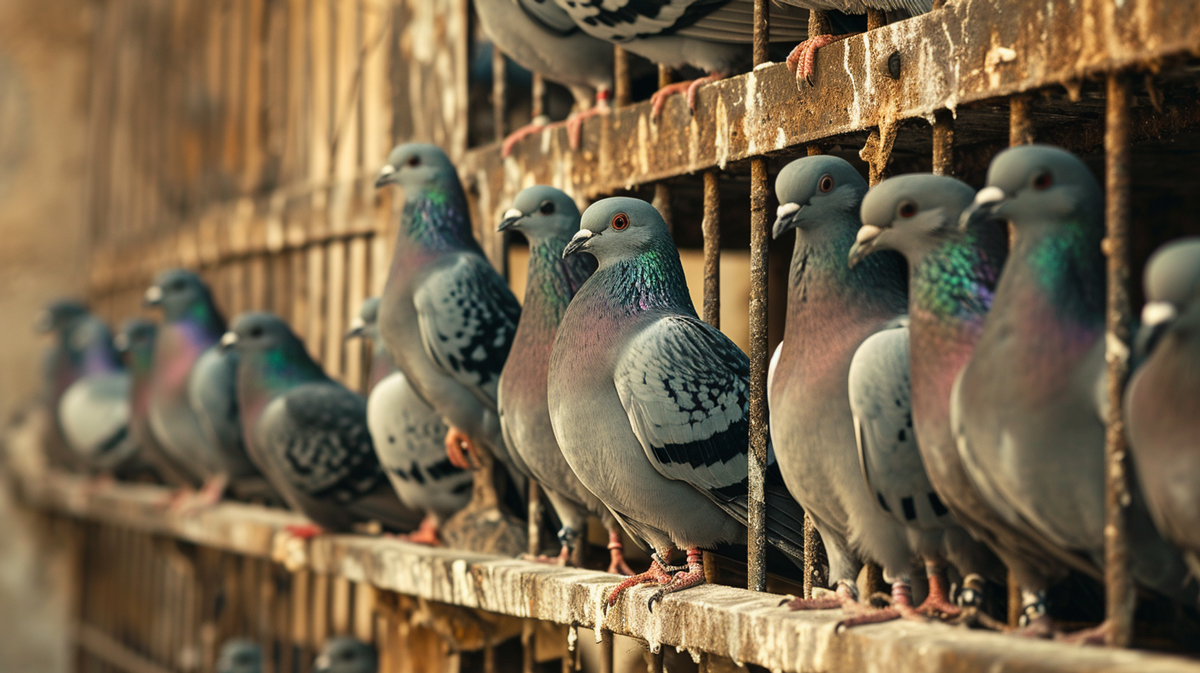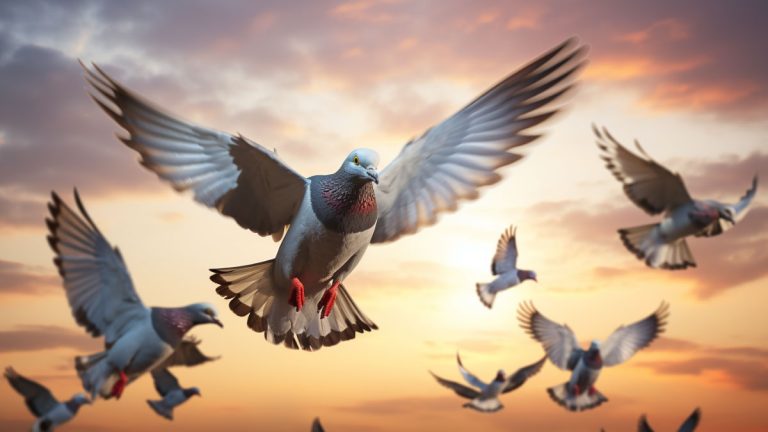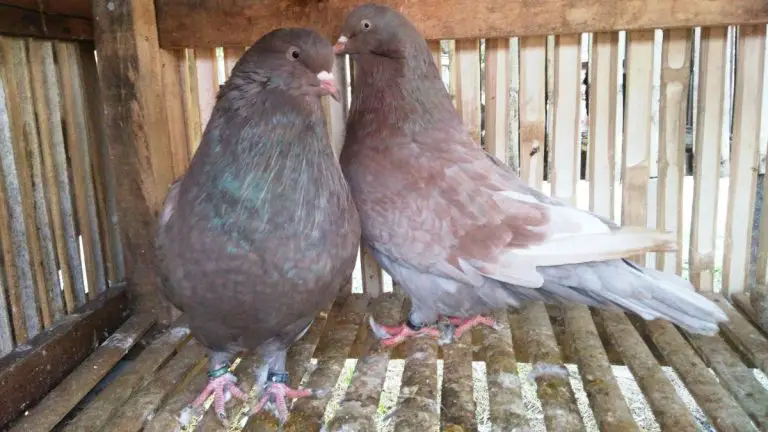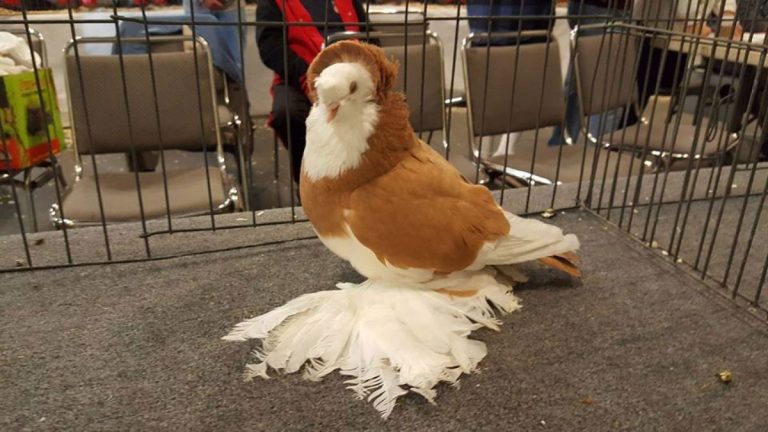Pigeon Foot and Claw Care: Essential Tips for Healthy Feet
Taking care of your pigeon’s feet and claws is essential for their overall health and well-being. As a pigeon owner myself, I know how important it is to ensure that their feet and claws are in top condition. In this article, I’ll share with you some valuable tips and techniques to help you keep your pigeon’s feet and claws healthy and strong.
When it comes to foot care, one of the key things to watch out for is foot infections. Pigeons are prone to various foot infections, such as bumblefoot, which can be both painful and debilitating for your feathered friend. I’ll guide you through the steps to prevent and treat foot infections, including proper cleaning and disinfection techniques.
Additionally, we’ll delve into the topic of claw care. Overgrown claws can cause discomfort and even lead to injuries. I’ll provide you with practical advice on how to trim your pigeon’s claws safely and effectively, ensuring that they are at the optimal length.
Importance of Pigeon Foot and Claw Care
As a pigeon enthusiast, I know that taking care of their feet and claws is crucial for their overall health and well-being. Just like humans, pigeons rely on their feet to get around, perch, and even defend themselves. Therefore, it’s essential to understand the importance of proper foot and claw care for these amazing birds.
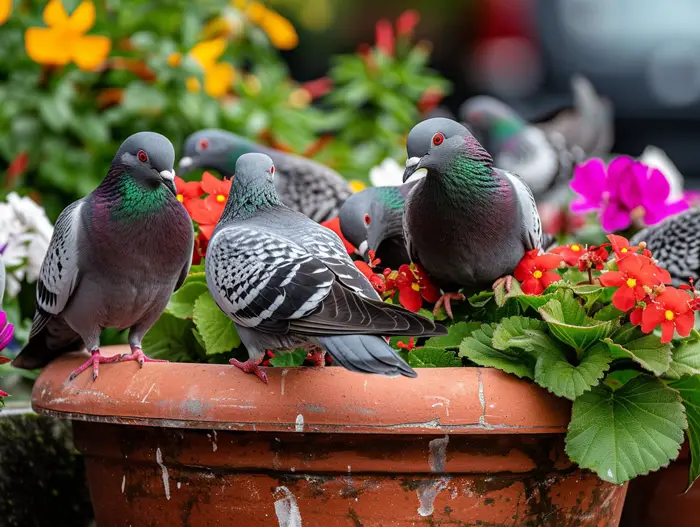
Preventing Foot Infections
One of the key reasons why foot and claw care is vital is to prevent foot infections, such as bumblefoot. Bumblefoot is a common condition among pigeons that can be painful and debilitating if left untreated. It occurs when bacteria enter small cuts or wounds on the feet, leading to inflammation and infection.
By practicing proper cleaning and disinfection techniques, I ensure that my pigeons’ feet remain clean and free from harmful bacteria. Regularly checking their feet for any signs of redness, swelling, or discharge is essential. If I notice any abnormalities, I take immediate action to prevent infection and provide proper treatment.
Maintaining Comfort and Mobility
Keeping a close eye on my pigeons’ claws is just as important as caring for their feet. Overgrown claws can lead to discomfort and even injuries. Pigeons use their claws to grip various surfaces, including perches and branches. If their claws become too long, it can affect their ability to perch properly, making it difficult for them to rest and sleep comfortably.
To ensure my pigeons stay comfortable and maintain their mobility, I regularly trim their claws. I use specialized pigeon clippers, which are designed to safely trim the excess length without causing any harm. By doing this, I help prevent painful injuries that can occur when long claws get caught in something or interfere with their movement.
Enhancing Pigeon Welfare
Proper foot and claw care not only contribute to the physical well-being of pigeons but also enhance their overall welfare. By taking these preventive measures, I create an environment that promotes their natural behavior, movement, and comfort.
Additionally, maintaining healthy feet and claws also prevents potential long-term issues that could hinder their quality of life. It’s my responsibility as a pigeon owner to prioritize their health and ensure their well-being is not compromised.
Remember, by practicing regular foot and claw care, we can keep our pigeons happy, healthy, and thriving. This simple yet crucial aspect of their care is essential for their overall physical and emotional well-being.
Common Foot Infections in Pigeons
As a dedicated pigeon owner, it’s crucial to be aware of common foot infections that can affect our feathered friends. Regular foot and claw care not only contribute to their physical well-being but also help prevent these infections. Let’s take a closer look at some common foot infections in pigeons and how we can address them:
- Bumblefoot – Bumblefoot is a bacterial infection that affects the feet of pigeons. It occurs when there is a break in the skin, allowing bacteria to enter and cause inflammation. This condition can be quite painful for pigeons and may lead to lameness if left untreated. To prevent bumblefoot, regular cleaning and disinfection of the pigeons’ feet are essential. I recommend using a mild antiseptic solution and gently wiping their feet with a clean cloth.
- Scaly Leg Mites – Another common foot infection in pigeons is caused by scaly leg mites. These tiny parasites burrow under the scales of the legs and feet, causing them to become crusty and swollen. If left untreated, scaly leg mites can impair the pigeon’s mobility and overall health. To address this infection, I suggest treating the affected birds with an appropriate acaricide under the guidance of a veterinarian.
- Fungal Infections – Pigeons can also suffer from fungal infections on their feet, such as ringworm. This condition is characterized by circular patches of scaly, itchy skin. Fungal infections can spread rapidly if not addressed promptly. I strongly recommend seeking veterinary advice for the proper diagnosis and treatment of fungal infections.
By being proactive in foot and claw care, we can minimize the risk of these common foot infections in pigeons. Regularly inspecting their feet, keeping their living environment clean, and maintaining proper hygiene practices can go a long way in promoting the well-being of our beloved pigeons. Stay vigilant and address any signs of infections promptly to ensure that our feathered friends stay happy and healthy.

| Infection | Description |
|---|---|
| Bumblefoot | Bacterial infection causing inflammation in the feet |
| Scaly Leg Mites | Parasitic infestation resulting in crusty and swollen legs and feet |
| Fungal Infections | Various fungal infections, such as ringworm, causing |
Preventing Foot Infections
Taking preventive measures is crucial for maintaining the health and well-being of our pigeons. By implementing a few key practices, we can significantly reduce the risk of foot infections. Here are some important steps to consider:
- Regular Cleaning: Keeping the loft and perches clean is essential in preventing the accumulation of bacteria and other harmful microorganisms. I recommend cleaning the perches at least once a week, using a mild disinfectant to eliminate any potential contaminants. This simple step goes a long way in promoting good foot hygiene for our feathered friends.
- Dry Environment: Moisture can be a breeding ground for infections. Ensuring that the loft is well-ventilated and free from excessive humidity is crucial. I suggest using bedding materials that absorb moisture effectively, such as wood shavings or straw. Additionally, providing a dry and clean nesting material helps to minimize the risk of infections.
- Trimming the Nails: Just like we trim our own nails, regularly trimming the pigeons’ nails is an integral part of foot care. Overgrown nails can lead to discomfort and potential injuries. With a pair of nail clippers designed for birds, gently trim the tips of their nails to keep them at an appropriate length.
- Inspecting for Problems: Regularly checking the pigeons’ feet for any signs of infection or injury is vital. Look out for redness, swelling, discharge, or any changes in their behavior. If you notice any abnormalities, don’t hesitate to consult with a veterinarian for a comprehensive evaluation and appropriate treatment.
- Balanced Diet: A proper diet plays a significant role in maintaining overall health, including the condition of their feet. Make sure your pigeons are receiving a well-balanced diet that includes essential vitamins and minerals. A healthy immune system goes hand in hand with foot health.
Treating Foot Infections
Taking proper care of pigeons’ feet and claws is essential for maintaining their overall health and well-being. However, sometimes infections can occur despite our best efforts. In this section, I will discuss how to treat common foot infections in pigeons.
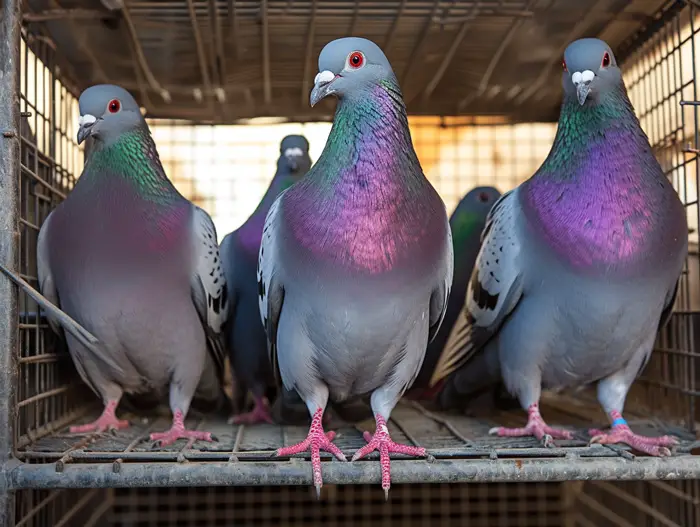
Bumblefoot
Bumblefoot is a condition in which the foot becomes inflamed and infected. If you notice any signs of bumblefoot in your pigeon, it’s crucial to take immediate action. Here are the steps I recommend taking to treat bumblefoot:
- Inspect the affected foot: Gently examine the foot for any signs of swelling, redness, or discharge.
- Clean the foot: Thoroughly clean the affected area with a mild antiseptic solution and warm water.
- Apply an antibacterial ointment: After cleaning, apply a topical antibacterial ointment such as neosporin to the affected foot. This will help prevent further infection.
Scaly Leg Mites
Scaly leg mites are tiny parasites that infest the bird’s legs and cause the scales to become raised and crusty. If your pigeon is suffering from scaly leg mites, follow these steps to treat the infection:
- Soak the legs: Gently soak the affected legs in warm water to soften the scales and ease discomfort.
- Apply petroleum jelly: Once the scales have softened, apply a thin layer of petroleum jelly to the legs. This will smother the mites and prevent them from multiplying.
- Repeat treatment: Repeat this treatment every few days until the scales have healed and the mites are no longer present.
Fungal Infections
Fungal infections can affect pigeons’ feet, causing discomfort and irritation. If you suspect a fungal infection, here’s how you can treat it:
- Clean the affected area: Thoroughly clean the affected area with an antifungal solution and warm water to remove any dirt and debris.
- Treat with an antifungal cream: Apply an antifungal cream specifically designed for birds to the affected area. This will help eliminate the fungal infection.
- Provide a clean and dry environment: To prevent the fungal infection from recurring, ensure that your pigeon’s living space is clean and dry.
Proper Cleaning and Disinfection Techniques
To ensure the health and well-being of pigeons, proper cleaning and disinfection techniques are crucial. As a responsible pigeon owner, I always make sure to follow these essential steps for maintaining cleanliness and preventing infections.
- Remove any debris:
Before starting the cleaning process, I first remove any debris or dirt from the pigeon’s feet and claws. This includes any mud, feces, or foreign objects that may have accumulated. I use a soft brush to gently remove the dirt, being careful not to cause any discomfort to the pigeon. - Wash with a mild solution:
Next, I prepare a mild antiseptic solution by diluting a gentle soap or disinfectant in warm water. I ensure that the water is not too hot to avoid scalding the pigeon’s sensitive feet. I then soak a clean cloth in the solution and use it to gently clean the pigeon’s feet and claws. This helps to eliminate any bacteria or germs that may be present. - Rinse thoroughly:
After cleaning with the antiseptic solution, I make sure to rinse the pigeon’s feet and claws thoroughly with clean, lukewarm water. This helps to remove any residue from the cleaning solution and ensures that there are no irritants left on the skin. - Dry completely:
Once rinsed, I pat the pigeon’s feet and claws dry with a clean towel. It is important to ensure that they are completely dry before allowing the pigeon to walk or perch. Moisture can create a favorable environment for the growth of bacteria or fungi, which can lead to infections. - Disinfect the surroundings:
In addition to cleaning the pigeon’s feet and claws, it is also important to maintain a clean and hygienic environment. I regularly disinfect the surfaces where the pigeons perch, using a pet-safe disinfectant that kills bacteria and fungi. This helps to prevent the spread of infections and ensures a healthy living environment for the pigeons.
By following these proper cleaning and disinfection techniques, I can ensure the well-being of my pigeons and help prevent common foot and claw infections. Regular maintenance and cleanliness play a significant role in keeping our feathered friends healthy and happy.
Remember, proper cleaning and disinfection techniques are crucial for maintaining the health and well-being of your pigeons.

The Significance of Claw Care
Taking proper care of a pigeon’s claws is crucial for their overall health and well-being. As a responsible pigeon owner, it’s essential to understand why claw care is so significant. Let me explain.
1. Balance and Stability
Maintaining well-trimmed and healthy claws helps pigeons maintain balance and stability when perching, walking, and flying. Untrimmed or overgrown claws can lead to discomfort and difficulty in navigating their surroundings. By regularly checking and trimming their claws, you can ensure that your pigeons can move around with ease and confidence.
2. Injury Prevention
Long, sharp claws pose a risk of injury not only to the pigeons themselves but also to other birds or handlers. Pigeons with overgrown claws may accidentally scratch or injure themselves or others while perching or interacting with their environment. Trimming their claws reduces the risk of such injuries, ensuring the safety of both your pigeons and those around them.
3. Disease Prevention
Regular claw care is an essential part of preventing foot-related diseases in pigeons. Overgrown claws can harbor dirt, debris, and parasites, leading to infections. These infections can be painful for the pigeons and may even impact their ability to walk or fly. By keeping their claws clean and well-groomed, you can minimize the risk of infections and maintain their overall health.
4. Comfort and Quality of Life
Imagine having to walk around with uncomfortable and overgrown nails all the time. It would be quite distressing, wouldn’t it? The same goes for pigeons. Taking care of their claws ensures their comfort and enhances their quality of life. Comfortable and well-kept claws allow pigeons to freely move, perch, and explore their surroundings, contributing to their overall happiness and well-being.
Trimming Your Pigeon’s Claws Safely and Effectively

Taking care of your pigeon’s claws is an essential part of their overall foot and claw care. Trimming their claws regularly not only keeps them comfortable and healthy, but also helps prevent injuries and foot-related diseases. In this section, I’ll guide you through the process of trimming your pigeon’s claws safely and effectively.
- Gather the necessary tools: Before you begin trimming your pigeon’s claws, make sure you have the right tools on hand. You’ll need a pair of small, sharp nail clippers specifically designed for birds. It’s important to use clippers that are the appropriate size for your pigeon’s claws to avoid causing any discomfort or injury.
- Choose the right time: Pigeons are generally more relaxed and easier to handle when they feel calm and secure. It’s best to choose a quiet, peaceful environment where both you and your pigeon can feel at ease. Additionally, try to trim your pigeon’s claws when they are in a state of rest, such as after they’ve eaten or during their usual nap time.
- Hold your pigeon securely: Gently but firmly hold your pigeon with one hand, ensuring that they feel supported and safe. You can place your thumb on their back while using your other hand to hold the claw you’re about to trim. This will help prevent any sudden movements and ensure a steady and controlled trimming process.
- Trim the claws: Look closely at your pigeon’s claws and identify the area that needs to be trimmed. Carefully cut only the pointed edge of the claw, making sure to avoid cutting into the quick, which is the sensitive part of the claw that contains blood vessels and nerves. Trim each claw with a quick, precise motion, avoiding any excessive force.
- Monitor progress and observe: After trimming your pigeon’s claws, observe their movements and behavior. If you notice any signs of discomfort or bleeding, stop immediately and seek professional help. It’s also important to monitor the growth of your pigeon’s claws and trim them regularly to maintain their length and prevent overgrowth.
Trimming your pigeon’s claws is a responsible and necessary part of their care. By following these steps and practicing regular claw maintenance, you’ll ensure that your pigeon’s feet remain healthy and strong. Remember, a happy pigeon is a pigeon with well-maintained claws!
Conclusion
Taking care of a pigeon’s feet and claws is crucial for their overall health and well-being. In this article, I have highlighted the importance of foot and claw care and provided valuable information on how to treat common foot infections in pigeons, such as bumblefoot, scaly leg mites, and fungal infections.
Additionally, I have discussed the significance of claw care for pigeons, including maintaining balance, stability, and preventing injuries. By regularly trimming a pigeon’s claws, you can reduce the risk of foot-related diseases and ensure their feet remain healthy and strong.
I have also provided a step-by-step guide on how to safely and effectively trim a pigeon’s claws, emphasizing the importance of using the right tools, choosing the right time, and holding the pigeon securely. It is essential to monitor their progress and seek professional help if needed.
